It is no secret that electric vehicle batteries are at an inherent disadvantage compared to the energy storage capabilities of gasoline. While 1 kilogram of gasoline holds about 43 MJ of energy, 1 kilogram of the average lithium-ion battery today holds about 150 Wh of energy, or just 0.54 MJ (although it should be noted that the 2014 Kia Soul EV can store 200 Wh/kg, and the Model S battery to be produced at the future Gigafactory is likely around that value if not higher).
This means that every unit weight of gasoline carries about 80x the energy of a battery. Therefore, to store the energy equivalent of a 15-gallon tank of gas, a typical lithium-ion battery would have to weigh about 7,000 pounds. Though electric vehicles are far more efficient than conventional vehicles and can recover energy through braking, to achieve the same range as a vehicle with a 15-gallon tank of gasoline an electric vehicle would still need a battery weighing in the neighborhood of 1,500 to 2,000 pounds.
Clearly, this is why electric vehicles can only achieve their current limited ranges. However, Volkswagen revealed this week that they are developing a new battery chemistry capable of more than tripling the energy density of their current lithium-ion battery found in the eGolf. Their initial estimate is an increase from 26.5 kWh to 80 kWh for the same size battery pack, meaning 3x the current range of the vehicle (which is estimated from 81 miles to 188 miles, but real-world range in the States will likely be around 100 miles).
The consensus, which VW board member Dr. Heinz-Jacob Neusser didn’t deny, is that this new battery uses lithium-air technology. Lithium-air has been a battery holy grail of sorts since the 1970s, but obstacles such as electrolyte degradation, manufacturability, and high cost have prevented the lithium-air takeover that would truly catapult electric vehicles into the mainstream.
Recently, improvements have been made to bring these batteries closer to reality; but if there is anything we have learned from following battery technology “breakthroughs” over the years it is not to get excited until at least the prototype stage, which VW has not even reached yet. Even after successful prototyping, new battery tech won’t see commercialization for several more years. So in this field, patience certainly is a virtue.
I would argue, however, that even achieving this phenomenal increase in energy density doesn’t mean we should automatically triple the range of every EV on the market. The biggest obstacle to market penetration for electric vehicles is not range anxiety, but high purchase price. The mass-market customers the industry badly needs think with their wallets first, and under solely that criteria most current EVs will be passed over. The eGolf will likely retail in the high $40,000 range – VW should use any improvements in battery technology to bring that cost down by using a smaller pack rather than increasing range with a pack of equivalent size.
However, the full debate can be saved for the day we know for sure that this super-battery will find its way into production vehicles.


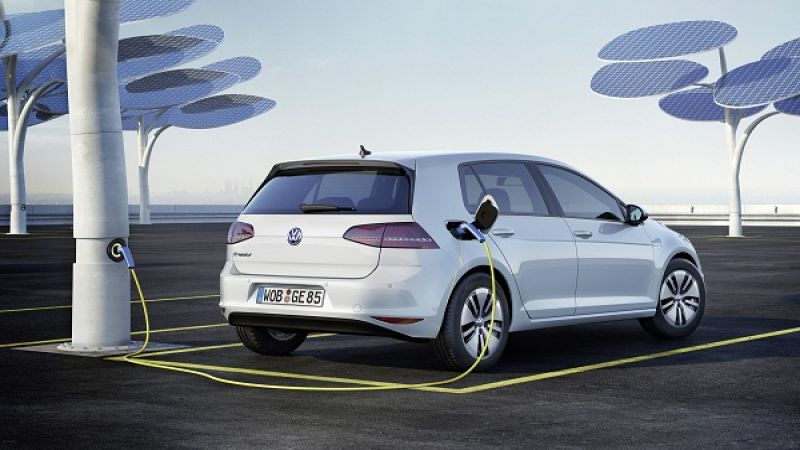




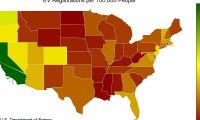
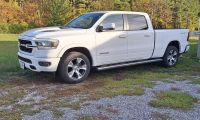
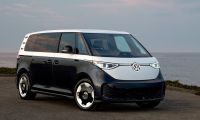

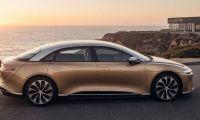
Comments
engineer or not , some of
Permalink
engineer or not , some of your basic statements are tremendously simplified. ICE seem to be at least 1/4 as efficient in converting their energy nor can the recycle kinetic energy from motion.
My apologies, I'll elaborate.
Permalink
My apologies, I'll elaborate. You are correct that ICE vehicles cannot regenerate kinetic energy, and they are indeed about 1/4 as efficient as electric motors (~20% compared to ~80% for typical operating points). My calculations assumed no regeneration for the EV, as that itself is far more complex than it appears on the surface depending on driving style and patterns, maximum input power rate, efficiency of the system, etc. Where I did make a mistake was where I mentioned equivalent battery size to achieve the same range. What I should have said was the battery size to achieve the same total energy storage. The actual calculations were not simplified, but the presentation of the results was simplified for fear of losing reader interest with math. Here is the data I used: As noted, gasoline has energy density of 43 MJ/kg while li-ion is about 150 Wh/kg. The conversion yields 0.54 MJ/kg for li-ion, so 43/0.54 = 79.6 (rounded to 80, ratio of energy density of gasoline vs. energy density of li-ion). Assuming 0.75 kg/liter for density of gasoline and 3.73 liters per gallon, a 15-gallon tank of gasoline holds about 42 kg of fuel which is therefore equivalent to about 1800 MJ of energy. To achieve the same total energy, the battery would have to weigh (1800 MJ/0.54 MJ/kg) = 3333 kg or 7333.3 pounds. So I actually rounded my values conservatively to give a nice even number. The basic statements are simplified because I neglected regeneration, but even with a best-case scenario you'll only get about 20% in energy savings. As you mentioned, though, ICE vehicles are inherently far less efficient than EVs, so an equivalent amount of on-board energy will take an electric vehicle 3-4 times farther. But even so, the point is made...the inferior energy density of current technology is responsible for the limited range of today's EVs.
"Therefore, to store the
Permalink
"Therefore, to store the energy equivalent of a 15-gallon tank of gas and achieve the same range as a conventional vehicle, not accounting for regeneration through braking, a typical lithium-ion battery would have to weigh about 7,000 pounds. Feel free to check my math, or just trust me. I’m an engineer."
The problem is you are mixing truth with nonsense in a Michael Moore-ish way. Had you been content to say "store the same amount of energy" your statement would have been true, though I would still view it as deceitful in context unless you also mentioned the very relevant fact that electric cars are way more energy efficient than fossil ones. By lumping in "and achieve the same range" you turn the statement into a complete falsity.
It is actually not necessary to "check your math" to realize you're not even in the ball park. Model S already achives close to "conventional car range" and does so without anywhere near seven tons of battery pack. What this demonstrates is not that your math is incorrect, but that it is at best irrelevant.
Given that you start by pointing out how little energy can be stored in batteries compared to petroleums, one should think it would occur to you to wonder how the Model S can possibly go as far as it does - or any other electric car, really. After all, the largest battery pack in a Model S (85 kWh) stores as much energy as 2.25 US gallons of regular diesel.
You argue in replying to another commenter
"My calculations assumed no regeneration for the EV, as that itself is far more complex than it appears on the surface depending on driving style and patterns, maximum input power rate, efficiency of the system, etc."
Driving style affects the energy efficiency of any drive because energy is lost whenever we lose speed and then accellerate again, and because drag increases proportional to the square of velocity. This affects any fossil vehicle just the same it does an electric one. Most electric cars however have regenerative braking (about 50% efficient), while fossil cars don't, since nobody's able to convert heat into petroleum. Electric motors are very efficient at all turning speeds and whether going flat out or just fizzling by. Fossil engines on the other have very variable efficiency, and at optimum convert three quarters of the chemical energy into heat rather than mechanical work.
"ICE vehicles are inherently far less efficient than EVs, so an equivalent amount of on-board energy will take an electric vehicle 3-4 times farther."
Then why didn't you divide your result by 3.5?
If you want to make a fair comparison, use the EPA range for both electric and fossil vehicles, then calculate miles/kWh. In the real world, actual range will indeed depend on a lot of parameters, but the point of the EPA range measurement is to establish a numerical result that can be meaningfully compared across vehicles.
"But even so, the point is made...the inferior energy density of current [batteries] is responsible for the limited range of today's EVs."
This is half right! If the cost was a tenth of what it is, and the batteries could be recharged in two minutes almost anywhere at low cost, I think however we might agree energy density isn't the whole picture.
I changed the article to get
Permalink
I changed the article to get rid of the "and achieve the same range" statement, because as I acknowledged in my previous comment I made a mistake in including that statement. I am not trying to deceive anybody, merely point out the disparity in fundamental energy storage capability of gas vs. li-ion. I don't need to wonder how Model S achieves close to conventional car range (though I wouldn't describe slightly greater than half as "close to") - I know exactly how the EPA calculates it. The massive battery, plus the efficiency benefits of the EM plus regeneration allow it to go well more than 3x farther per unit energy than a regular vehicle. Which I could have mentioned, but that's not the point I was making with the article. And I won't nitpick your statements, but I am very aware of all the things you said and most are correct (I will point out though that 7,000 pounds is not 7 tons). The purpose of the article was to remind why EVs have limited range, and though there are several contributing factors...such as the cost and charging times of batteries, as you mentioned...both of those in part stem from the fundamental problem, and that is the energy storage capability of existing li-ion batteries. That is why tripling energy density would be so important.
Dag, did you drive an
Permalink
Dag, did you drive an electric car for an extended period ?
If so you will know how far off the range predictions are. Even the cars own estimates of remaining range is generally useless. I think the EPA predictions on range is somehow more truthfull when it comes to petrol cars. Why ? I don't know. Maybe they are simply based on more experience.
I have driven a Nissan LEAF for a month and I loved it. But i also found that the range was way below even the worst predictions from EPA and Nissan and who ever has some academic opinion about that.I soon learned to completely disregard the cars own range prediction and simply keep to trip counter vs. battery charge meter. No matter how economicaly I drove the car, the range meter would always drop faster than the trip counted up. Also for longer drives where the range computer should have a good chance to do some decent calculations. Nope. Range meters - in at least the Nissan Leaf - is usless.
So... when I was driving the car hard using what ever I needed of acessories I would get 5 km per batterylevel division. When driving very smoothly with low top speeds an no heat and so on I would get at most 8 but lets say 9 km per division. Normal driving would of course get anywhere in between. Now there is 12 such divisions in the Leafs battery level meter - the last two being red. (The battery capacity is 25 kWh). That is about 100 - 110 km at the very very best.
What I am trying to say here is that I don't believe for a second that you get more than 300 km max from the full charge of a Tesla (85 kWh) when driving normaly. And even if you should get 400 km (which would require very gentle driving from full to empty) it is still way lower than you would get from a similar petrol car. I am not saying petrol cars are more efficient at all. The luxury versions with thirsty engines are just fitted with larger and larger tanks.
I do however love the Tesla, I tried it and think it is a great car in every way. And I can only hope their range meters provide better estimates.
Dag, the LEAF range indicator
Permalink
In reply to Dag, did you drive an by Jens Jacob Jørgensen (not verified)
Dag, the LEAF range indicator is notorious for being inaccurate - owners have taken to calling it the guess-o-meter. Keeping tabs on the % battery remaining will be far more helpful. Where do you live? Cold weather is known to suck range quickly. And in fact, it is quite easy to get 400 km in a Tesla...the rated range is even higher than that, and driving a constant speed of 55 mph will get you more like 480 km. It depends a lot on driving style, heating/AC use, and outside temperature. Even the most aggressive driving in a Tesla will get you 300 km of range...see owner real-world averages here http://www.teslamotorsclub.com/showthread.php/13310-Lifetime-Average-Wh-mi